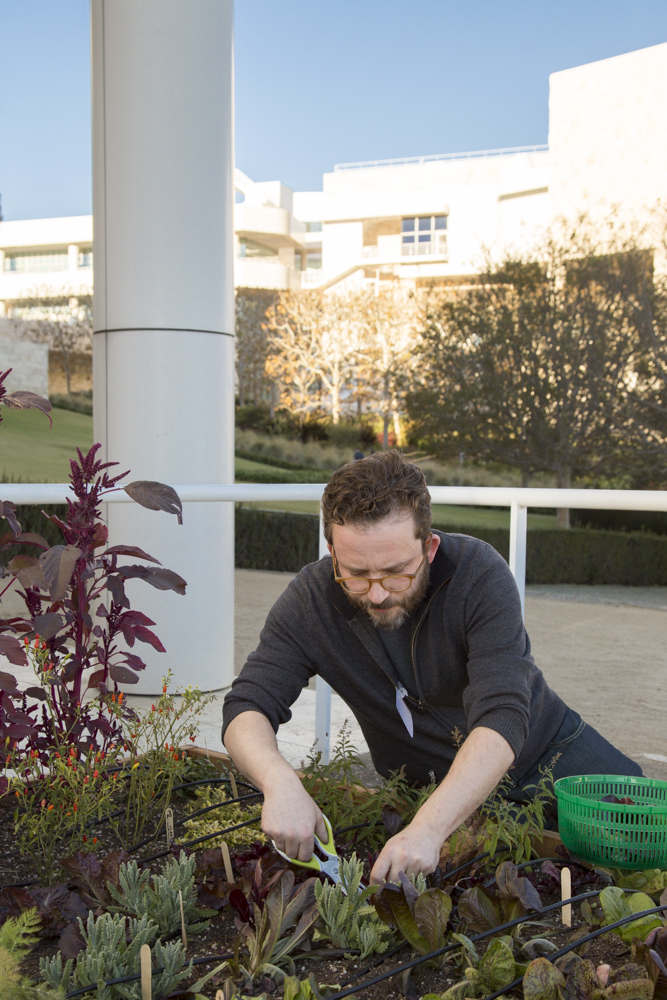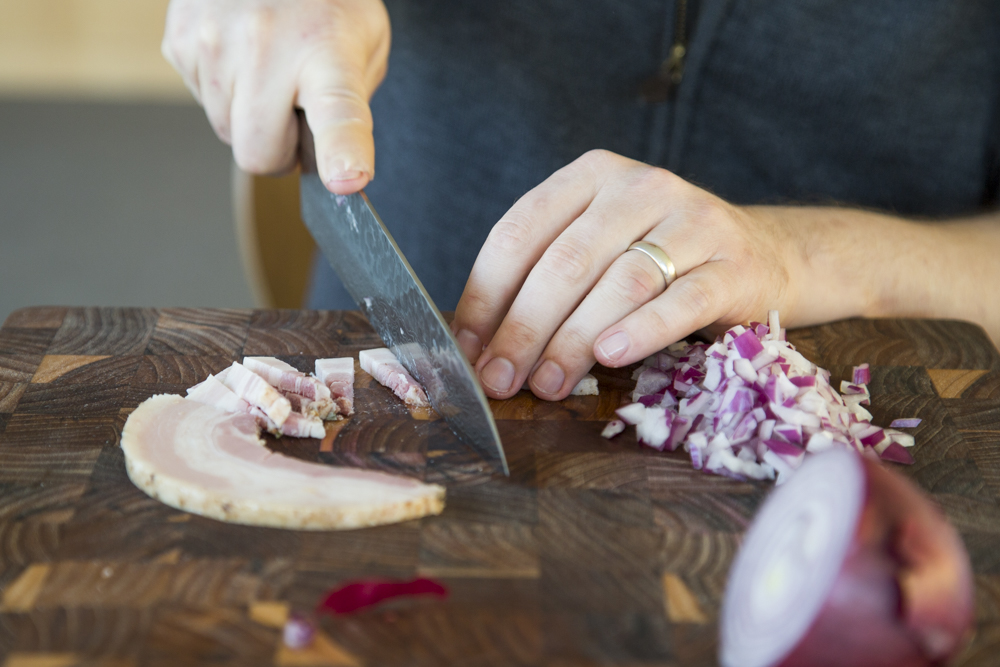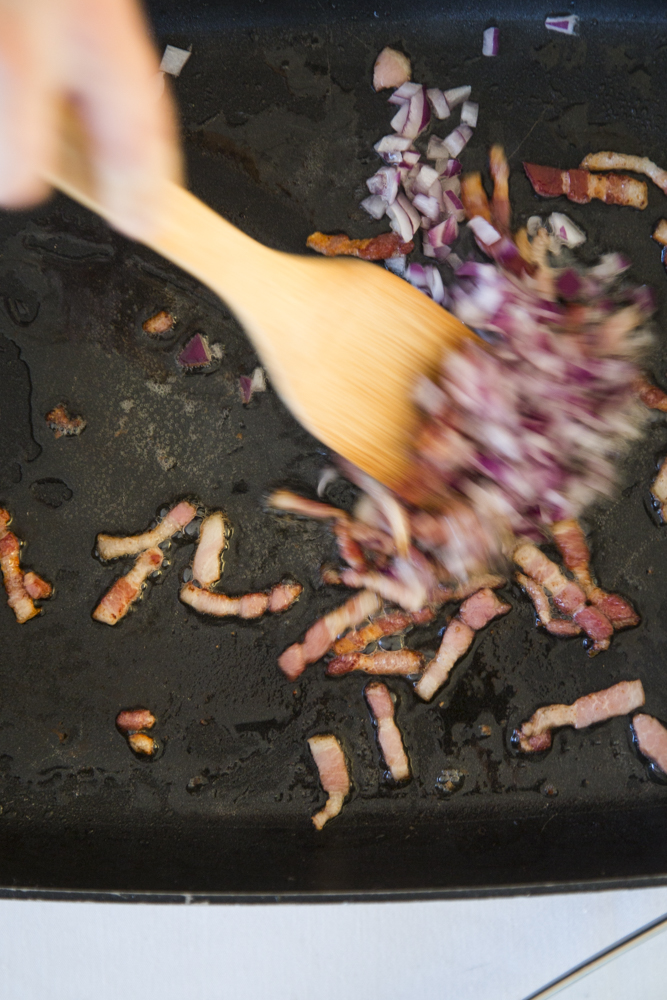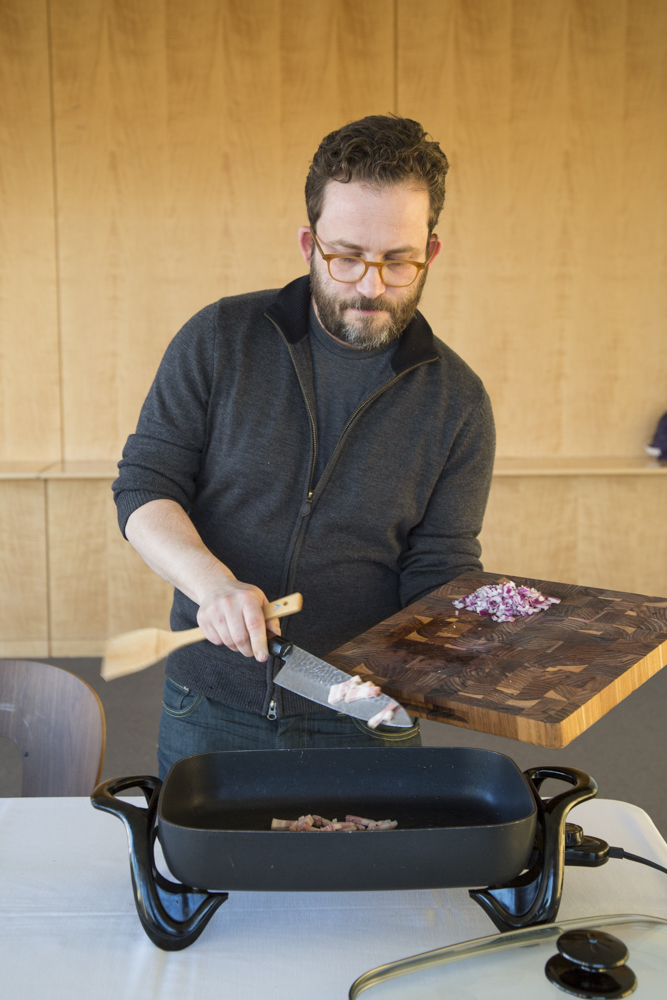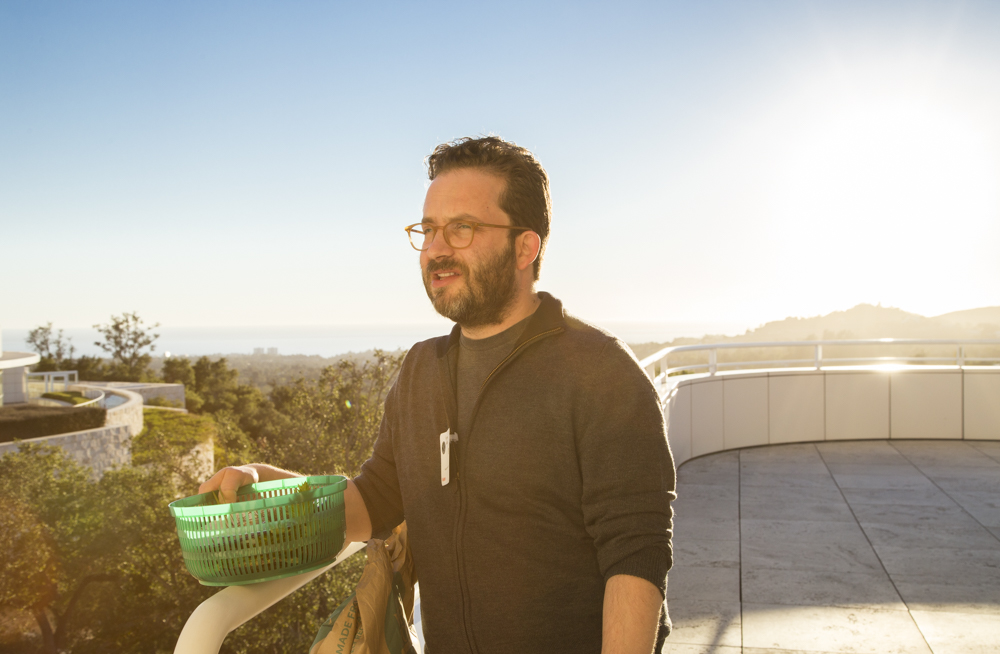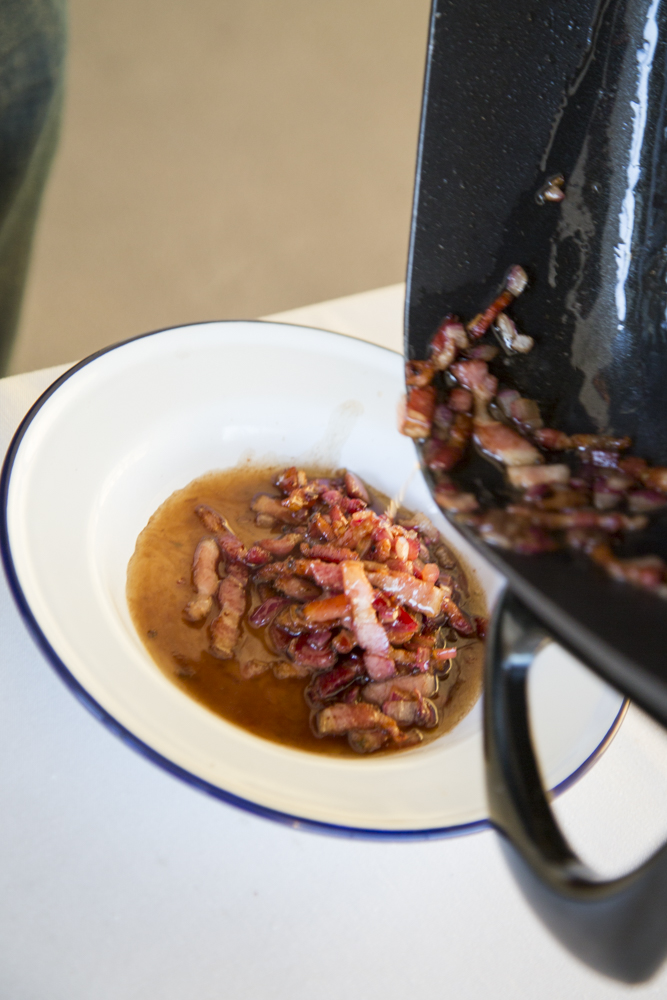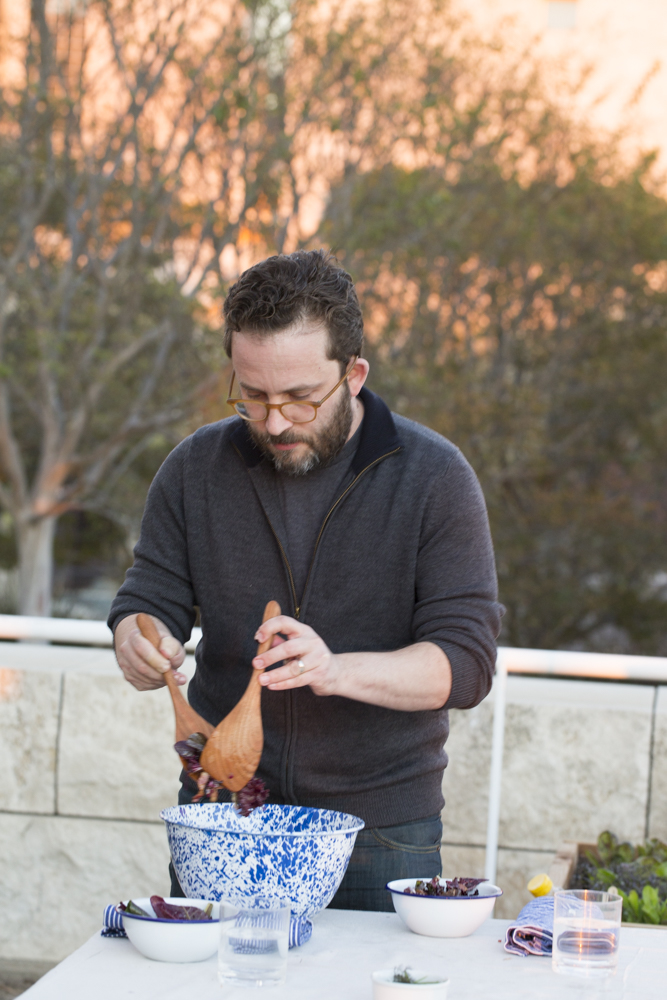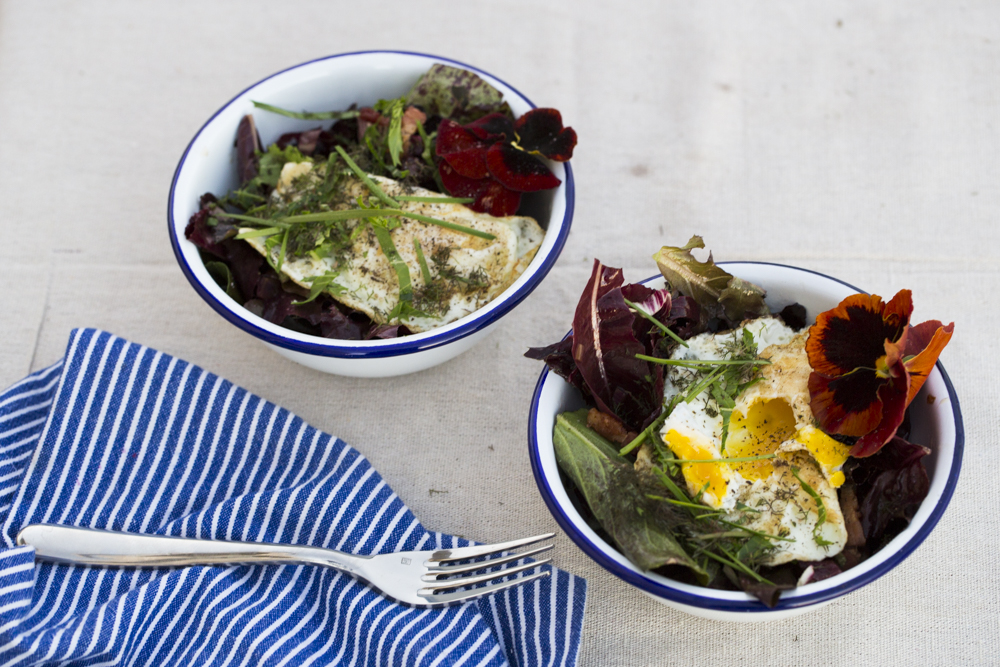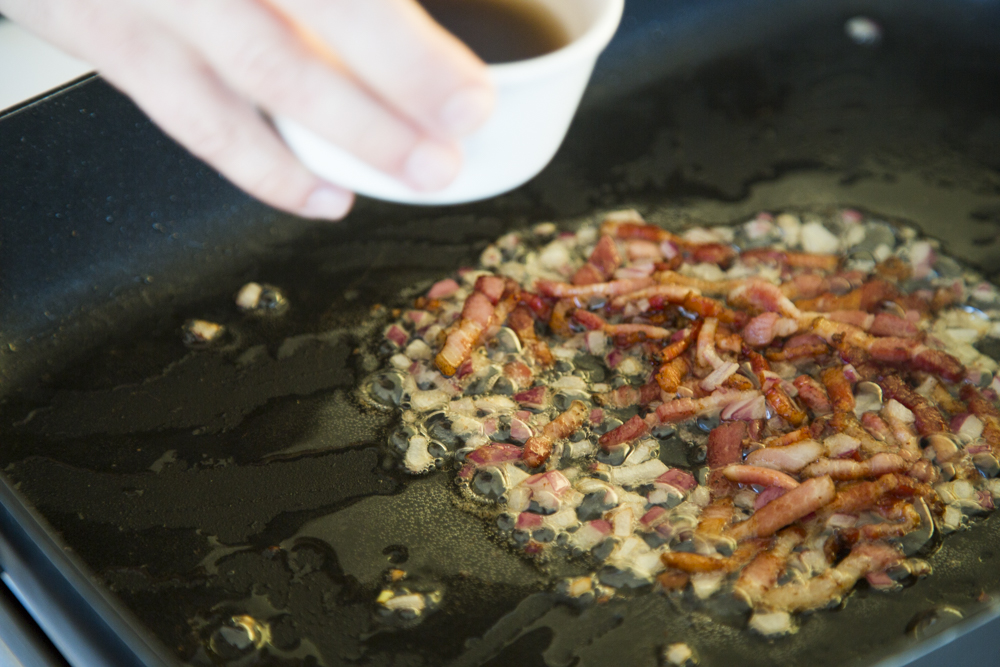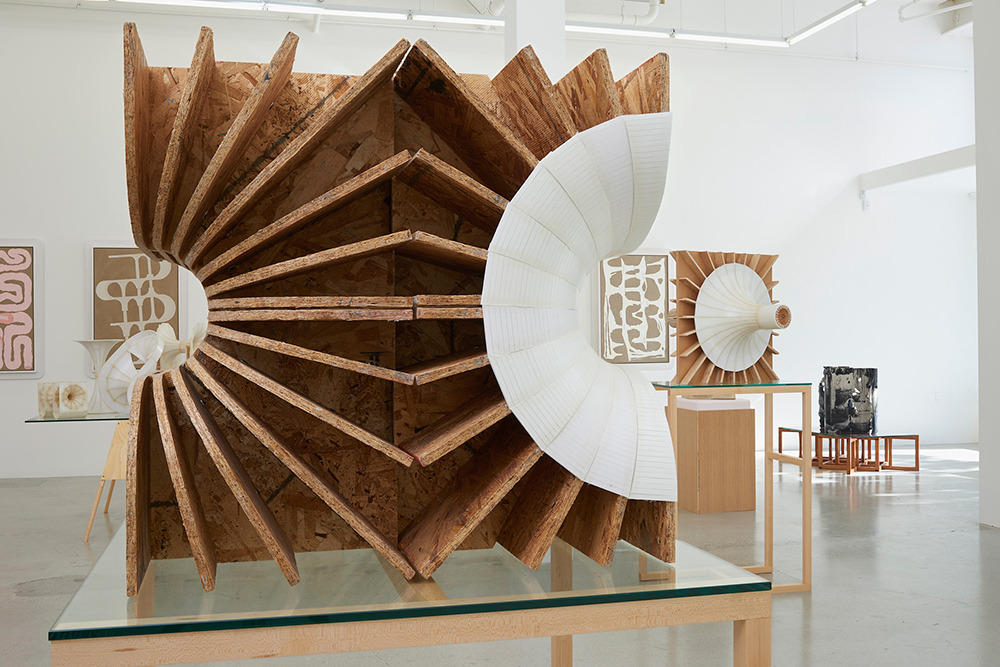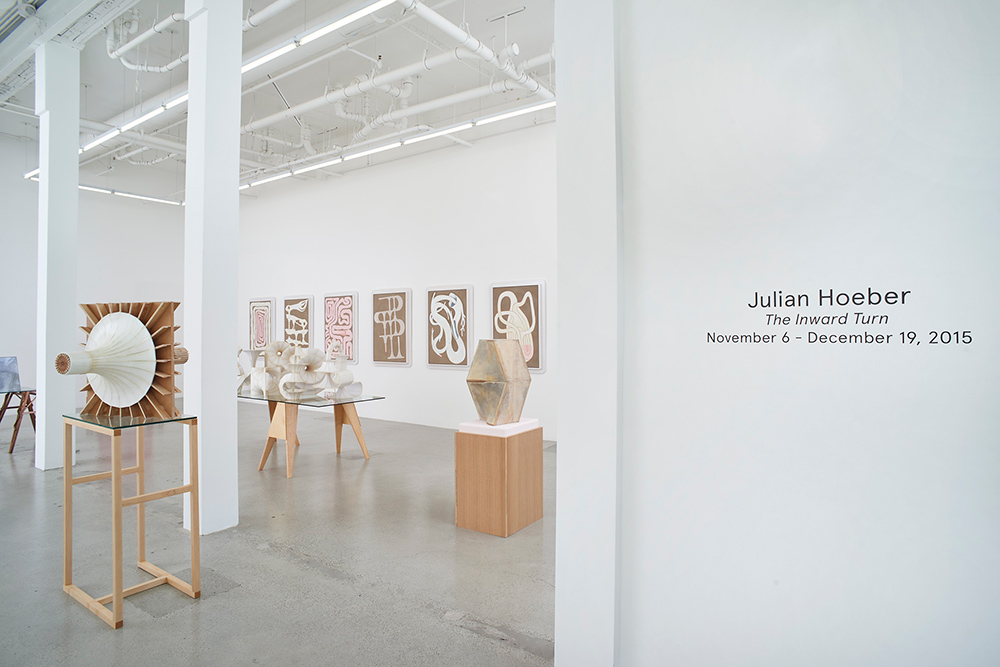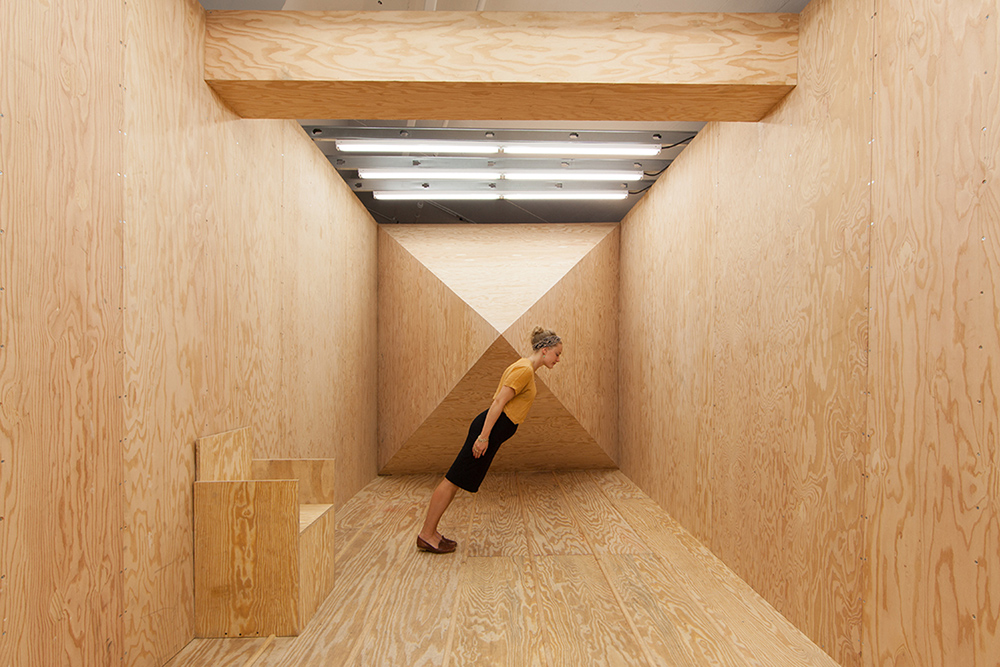Chicory, Italian Bacon, Chives and a Fried Egg
Julian Hoeber’s Pancetta and Bitter Greens Salad
NOTES
A hearty, filling salad, this can be made with any assortment of wintery greens – try escarole or any of the various types of chicory available this time of year. Pancetta is salt-cured pork belly, similar to bacon, except it is not smoked. This is a nice, refined alternative pork product to amp up your vinaigrette and add crunch to the salad.
RECIPE
DIFFICULTY
EASY
SERVES
4
PREP TIME
10 MINS
Salad
-
12ozbitter greens
-
Bronze fennel fronds, for garnish
-
garlic chives, for garnish
Dressing
-
2ozpancetta, cut into matchsticks
-
2tbsolive oil
-
1shallot, diced
-
1 1/2ozapple cider vinegar
-
salt and pepper
Fried Eggs
-
2eggs
-
olive oil
POSTED UNDER
- entree,
- Getty Salad Garden
You have to respect a man who arrives at The Getty Museum packing his own pancetta.
I had never met Julian before our salad session, though I was a fan of his work, and his reputation as an impressive cook preceded him. But Julian is thoughtful in everything he does, from the way he works to the way he prepares a salad. In fact, Julian is the best kind of savant — the kind who has mastered the art of sharing his own wellspring of knowledge, with nothing but generosity. In poking around and reading about Julian, I found an article by Luc Sante that spoke as much to Julian’s work, as it does to the artist himself:
As an expert walker of high wires, razor edges and philosophical controversies, Hoeber is exceptionally well situated to bring about the reunion of the effete high and the brutish low, mutually engaged in an installation of meditative chicanery.
Julian Hoeber in His Own Words
Julia Sherman: Ok, I have been dying to ask you about that crazy off-kilter room you build at The Hammer Museum. How did you do that?
Julian Hoeber: You know when you go out to sea they tell you to look at the horizon so you don’t get seasick? When you go inside the room, the architecture creates a new horizontal vertical, but it’s fabricated. Your intellectual brain knows it’s false, but your lower brain and inner ear adjust to a new X and Y axis. So you feel like you are standing at a steep incline, when in fact you are straight up and down.
JS: What other kinds of weird stuff are you into?
JH: Nothing all that weird. I’m definitely a practitioner of Flaubert’s perspective, “Be regular and orderly in your life, so that you may be violent and original in your work.”
JS: That’s a very Japanese idea. I found that even the most eccentric artists or performers I met there, were actually incredibly mellow and low key in their day-to-day life. I like that dissonance, it’s surprising.
JH: I recently attended at an art gala and people were teasing me saying, “wow, you got a haircut,” or “you’re wearing Brooks Brothers, aren’t you’re supposed to be weirder than that?” I told them, “Nope, not at all.”
JS: Have you always been that way? You never even had pink-hair or a facial piercing?
JH: When I was ten years old, my brother took me to an Agnostic Front show and his friends gave me a Mohawk. So, I had a six-inch-tall Mohawk when I was ten and that was it for me.
JS: They gave you the Mohawk against your will?
JH: No! I was really into it, but that got it out of my system.
JS: Yeah, it makes people uncomfortable when an artist isn’t playing the role to spec. Personal appearance is part of the job.
JH: At openings people sometimes assume I am a collector.
JS: You should say you are. I’m sure you have a lot of your friend’s work; it wouldn’t be a lie.
JH: Oh yeah, I suppose in that sense I am.
JS: Once I stopped worrying about whether or not I was playing by the rules of the art world, so many doors opened up to me. Recently I had a couple of my old professors ask me to talk to their students in an effort to show them that there isn’t just one way to be in the art world.
JH: You mean, the question, “how do I get a gallery?” is not the only question worth asking?
JS: Exactly. I think older, successful artists/professors want to impart a realistic notion of what the long-term goals of an artist can be or should be. We don’t all have to cram ourselves into the commercial art world. Whenever I tried to transfer the energy of my process, writing and research to the gallery, all my decisions felt arbitrary. The way I placed a sculpture or hung a photo, whether it was twelve inches or fourteen inches from the window seemed inconsequential.
JH: You know, it feels arbitrary to all of us. I think you just have to embrace it. If I walk into a gallery and see a pair of sneakers, I’m like “Ugh, a pair of sneakers.” If I walk into a gallery and someone tells me, “that is the pair of sneakers Oswald was wearing when he shot Kennedy,” the sneakers suddenly glow. In some ways you’re right–the rest is arbitrary. How do you imbue these objects with that aura? Even Matthew Barney needs a story to support the meaning of interesting objects. This is one of the great lessons of 20th century art.
JS: Well, I know, but Matthew Barney’s objects convince you there is mythology behind them.
JH: But, that is exactly what I mean. For people that make objects, there is a certain point where you just have to buy into your own mythology to believe it is worth the trouble to make anything at all.
JS: Do you think that is why you would be drawn to make something like a room that makes mysteriously, physically destabilizes the viewer?
JH: More and more, that’s what I am interested in–the architecture. But, the difference between twelve inches and fourteen inches rarely matters. I know an artist who hangs their art on the walls and tell the preparators to move it up three inches, left three inches, down three inches and right three inches. It ends up in the same place it started, but they just need to control it somehow. It’s nonsense. There’s no intrinsic value to the difference between those three inches.
JS: Being an artist just teaches you how to be a problem solver, a story teller, and how to be resourceful.
JH: That’s a really optimistic, positive version of it. I got pulled into the machine really early, you know?
JS: You’ve never felt constrained by the pressures of the commercial art world?
JH: No, I’m too stubborn and restless. I’m constrained by worrying about my bank account, but I think everyone is no matter what they do. I just kind of figured I would make what I wanted to make because I am too dumb not to.
JS: As I get older, I love to see older artists fail publicly. It gives me hope that somebody is still actually doing their job as an artist, taking risks, being brave.
JH: A very smart curator I know, was just talking about an artist and said, “Oh I love his work, it is really uneven.”
JS: Yeah. That is so good! That is so refreshing. Laurie Anderson made a new film where she put a GoPro on her dog. People have given it some pretty mixed reviews, and I can’t wait to see it! It’s got dogs, its Laurie Anderson, how bad could it be?
JH: It could be terrible. A lot of very good artists have made very, very bad films, but that can be quite interesting.
JS: Well, here’s to a life of incredibly uneven work.
JH: Bon appetit.


